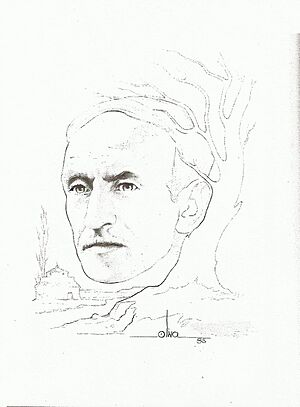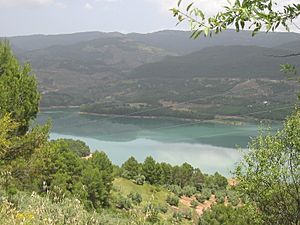Juan José Cuadros Pérez facts for kids
Quick facts for kids
Juan José Cuadros Pérez
|
|
|---|---|
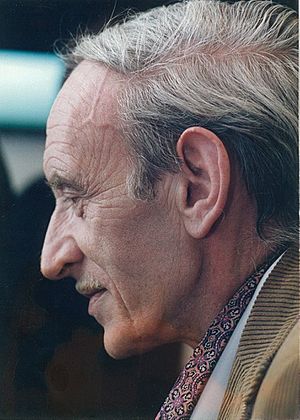 |
|
| Born | Juan José Cuadros Pérez 7 October 1926 Palencia, Spain |
| Died | 27 May 1990 (aged 63) Madrid, Spain |
| Pen name | Martín de Fromista |
| Occupation | Poet, writers |
| Language | Spanish |
| Period | 20th century |
| Literary movement | Social poetry |
| Notable works | Niño sin amigos, Aquí se dice de un Pueblo, Navanunca, El Asedio (poesía), Recado de buen amor, Vuelta al Sur, Memoria del camino, El único camino, Los últimos caminos, Caminos (antología poética) Viaje a la Sierra de Segura, El libro de Guindalera, Por los cerros de Úbeda, Tiempo rescatado, Por tierra de pan amar and Al amor de los clásicos. |
| Notable awards | González de Lama 1974 Antonio Camuñas 1983 |
| Spouse | Maruja |
| Children | Almudena |
| Signature | |
 |
|
Juan José Cuadros Pérez (born October 9, 1926, in Palencia, Spain – died May 27, 1990, in Madrid, Spain) was a Spanish writer. He was known for his poetry and prose. His father was from Beas de Segura (Jaén), a town where Juan José spent his childhood. He was the oldest of four children.
In 1941, he moved to Baeza to continue his high school studies. From 1945, he lived in Madrid. There, he studied sciences but later became a surveyor. He worked at the National Geographic Institute. In Madrid, he met Maruja Fernandez de Ayala, a pharmacist. They married and had a daughter named Almudena. Through his wife, he met other poets.
After his mother's death in 1958, he felt a strong connection to his hometown. He visited Palencia often and joined a group of poets. They worked with the Rocamador magazine. He published many works in newspapers and magazines. His job as a surveyor also allowed him to travel across Spain. He published several books during his life. Many more were published after he passed away in 1990.
Juan José Cuadros received many honors from his peers. In 1997, a street in Palencia was named after him. His unpublished poems were also released. In 2008, a book about his literary studies was published. In 2010, Beas de Segura held a cultural event to honor him.
Contents
About Juan José Cuadros
Growing Up
Juan José Cuadros was born in Palencia. When he was three, his family moved back to his father's hometown, Beas de Segura. He spent his first ten years there. He learned about the town and its customs from his grandfather, Antonio. Antonio was a baker and called him "Toñin." Juan José was a blond, blue-eyed boy who stood out in the town.
During his childhood, he played with friends in the streets and squares. These places, like Repullete Alley, became the setting for his games. He played with friends like Miguel Ojeda. Years later, he wrote about these memories in his poems.
He lived in Beas de Segura during the Spanish Civil War. Even at ten years old, he understood what was happening. These memories stayed with him. In 1939, his father moved to Barcelona. The next year, his father went into exile in France. He returned to Spain in 1948. This absence affected Juan José during his teenage years. His mother took care of him and his education. He also lost two younger brothers, Carlos and Alfonso, at a young age. Only his brother Germán survived and settled in Cuenca.
He had good memories of his teacher in Beas, Luis Ardoy. He later dedicated a poem to him. In his book Aquí se dice de un pueblo, he wrote about the town. He described its people, his grandfather's job, and the olive oil, which was important to Beas. He also wrote about his childhood in Beas in his book Tiempo rescatado.
His Education
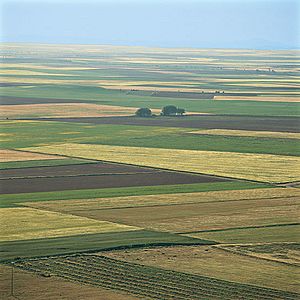
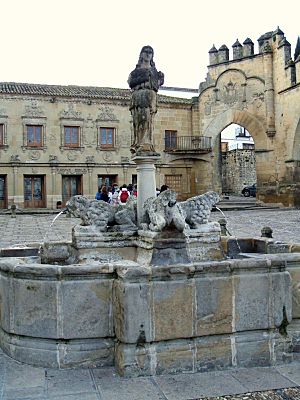
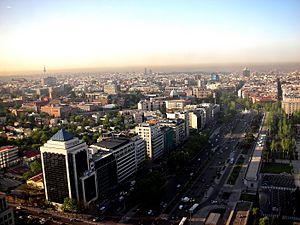
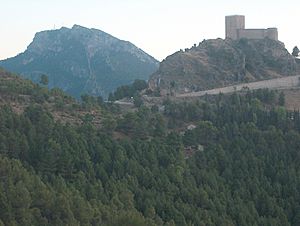
From a young age, Juan José showed great intelligence and imagination. He was a good observer. He started his studies in Beas de Segura. After the war, in 1941, he moved to Baeza (Jaén). He finished high school there. He studied at the same institute where Antonio Machado, a famous French teacher, had worked years before. Machado's memory inspired him to love literature and poetry. He also remembered the mystics Saint Teresa of Avila and Saint John of the Cross, who had visited Beas.
After moving to Baeza, he returned to Beas on weekends and holidays. He joined summer camps for young people. One camp was in the Morciguillinas area in the Sierra de Segura. Because of his talent, he was chosen to write a journal about the camp. He met other young people from the Sierra de Segura region. He became good friends with them. Years later, he visited their towns to gather information. He used this information to write sketches of the highland villages. His first prose book, Viaje a la Sierra de Segura, was published three days before he died.
In 1945, he finished high school in Baeza. He then moved to Madrid to study at the Royal Academy. He decided to study exact sciences. However, after the war, money was scarce. He needed to work while studying. This made it impossible to continue. He then decided to become a surveyor. He passed the exams with great effort. He started working at the National Geographic Institute of Spain. He worked there until his last days. He lived in Madrid but often visited his hometown and where he grew up.
In Madrid, he met Maruja Fernandez de Ayala. They married and had a daughter, Almudena. Both Maruja and Almudena were important in his writings.
His Writing Journey
Juan José balanced his work with his love for poetry and prose. His hometown, Palencia, his adopted town, Beas de Segura, and the cultural city of Baeza were his inspirations. He also drew inspiration from Tierra de Campos in Castile and the Guadalquivir river in Andalusia. In 1948, he started publishing his first poems in the Jaén Journal. He published many poems, including:
- In 1948: High Jaén, the peoples in my memory (about Baeza, Linares, Andújar, the Guadalquivir, Villanueva, etc.).
- In 1957: Andalucía en la poesía.
- Romance a Baeza.
- Romance del navío de Piedra.
- April 19, 1959: Guadalquivir river giennense vocation. Part 1.
- May 12, 1959: Guadalquivir river giennense vocation. Part 2.
- In 1960: Cervantes, Antonio Machado and Baeza.
His writings quickly gained attention. On June 20, 1960, he won the Natural Flower prize. This award was for his work "The Juggler." He shared the prize with Rafael Palma.
When he arrived in Madrid, he quickly joined the literary scene. He attended gatherings, conferences, and cafes. He met Federico Muelas, who wrote the introduction to his first book, Niño sin amigos. He also met famous poets like Gerardo Diego, José Hierro, Vicente Aleixandre, and Ramón Garciasol. Garciasol became a close friend and gave him good advice. He even encouraged Juan José to appreciate classic literature.
When his father returned from France in 1948, he settled in Villanueva del Arzobispo. Juan José, though living in Madrid, often visited Villanueva and Beas. His early poems appeared in the Jaén Journal. He became well-known. The City Council of Villanueva del Arzobispo asked him to be the town crier for their fair on September 6, 1960. His poems are also carved at the entrance of the Sanctuary of the Fuensanta de Villanueva.
After his mother's death in February 1958, he felt a strong desire to visit his maternal roots. From 1959, he regularly visited Palencia. There, he met people who shared his interests. He met José María Fernández Nieto and Marcelino García Velasco. They had created the Rocamador magazine in 1955. He also met Manuel Carrión, who became a good friend. Juan José started publishing poems in issue 15 of the magazine. His poems were in a pure Castilian style. From issue 33, he joined the magazine's editorial team. In November 1959, he became the Madrid correspondent. He reported on literary events in the capital. He wrote these reports as letters under the name Martín de Fromista.
These letters were literary criticisms of Madrid's literary scene. They also contained news and other details. He wrote them in old Castilian, giving them a unique touch. Manuel Carrión helped him from his office at the National Library of Spain. This way, Juan José knew about all the new books published in the country. He also started the Rocamadour collection. His first publication in this collection was Navanunca in the summer of 1961. Other famous poets later published their works in this collection.
The Pharmacy Connection
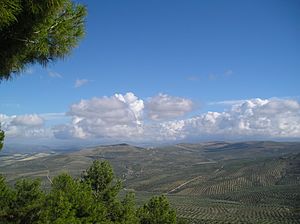
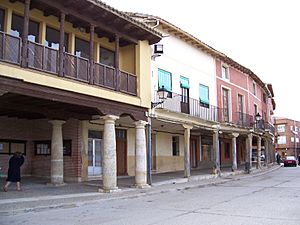
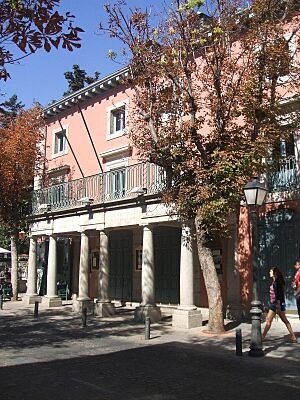
Maruja, his wife, was a pharmacist. She ran a pharmacy on Pilar de Zaragoza Street in Madrid. This pharmacy became a meeting place for many poets. Some other poets were also pharmacists. This allowed Juan José to combine his work with his love for poetry. For example, Federico Muelas had a pharmacy on Gravina Street in Madrid. In his back room, which they called the "Ateneo," writers like Camilo José Cela and Gerardo Diego met. Rafael Palma had another pharmacy on Gaztambide Street, also a meeting spot. Even José María Fernández Nieto, the director of Rocamador, was a pharmacist in Palencia. This led to the creation of the Spanish Pharmacists Association and Arts (AEFLA) in 1974.
Poetry in Newspapers
In the 1970s, his poems appeared in the ABC newspaper. They were part of a section called "...and poetry, every day." He wrote many poems about cities, such as:
- Soria.
- Palencia.
- Patio de comedias de Almagro, and others about Los Cómicos.
- Francisco de Quevedo.
- Lope de Vega.
- A tribute to Íñigo López de Mendoza, 1st Marquess of Santillana, titled Razón para el Marqués.
- A tribute to Góngora, Glosas a don Luis.
- Fusulamientos de Moncloa.
He never forgot his birthplace. In the late 1950s, Palencia's cultural circles helped his poetic life. He worked hard for the Rocamador magazine. Its director, José María Fernández Nieto, encouraged him to contribute poems and criticisms. This magazine became very important in the 1960s. The book Navanunca started the Rocamador collection.
Works
His Influences
When he moved to Baeza in 1941, the presence of Antonio Machado greatly influenced him. Machado's work often featured Baeza. Juan José would recite Machado's poems weekly. This helped him develop his love for poetry. Machado was the starting point for his poetic journey.
Juan José felt a strong connection to Jorge Manrique, another poet. He saw many similarities between them. For example, Manrique's time in prison in Baeza was like Juan José's time at the Institute of Baeza. Also, both their wives had the maiden name Ayala.
How His Style Changed
| ESTE AMOR NO ES LO QUE ERA
Juan José Cuadros |
His poetry slowly became better and better. He aimed for perfection in his art. He read many classic works and focused on traditional Castilian style. He kept his language pure and avoided modern trends. He set aside his first two published works. His style truly took off with Navanunca, the first book in the Rocamadour collection, and later El Asedio. These works showed a new vision in his writing.
Moving to Madrid helped his poetry mature. The city offered many resources. He also made important friendships. Ramón de Garciasol, a close friend, gave him valuable advice. His connections with poets from Palencia, especially through the Rocamador magazine, also helped him grow as a writer.
His works are divided into poetry and prose. He is considered a poet of the second generation after the Spanish Civil War.
Poetry
His poetry is unique and personal. He expressed his feelings deeply. He started unsure but slowly improved his writing skills. His language was rich and religious, yet simple and enjoyable. He developed a clear path and an admirable technique.
Ramón Garciasol described him as "a branch from an Andalusian trunk with Manrique's style."
- Niño sin amigos (1959)
- Aquí se dice de un pueblo (1960)
- Navanunca (1961)
- El Asedio (1963)
- Recado de buen amor (1968)
- Memoria del camino (1975) González de Lama Prize (1974)
- Vuelta al Sur (1977)
- Los últimos caminos (1984) Antonio Camuña Prize (1983)
- Published After His Death
- El único camino (1991)
- Caminos (antología poética) (1993)
Prose
- El libro de Guindalera (1992)
- Tiempo rescatado (1999)
- Al amor de los clásicos (2008)
Travel Books
- Viaje a la Sierra de Segura (1990)
- Por los cerros de Úbeda (1998)
- Por tierra de pan amar (2000)
Images for kids
See also
 In Spanish: Juan José Cuadros Pérez para niños
In Spanish: Juan José Cuadros Pérez para niños


